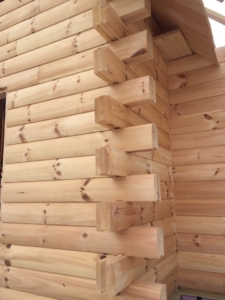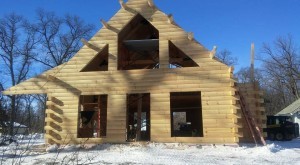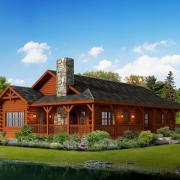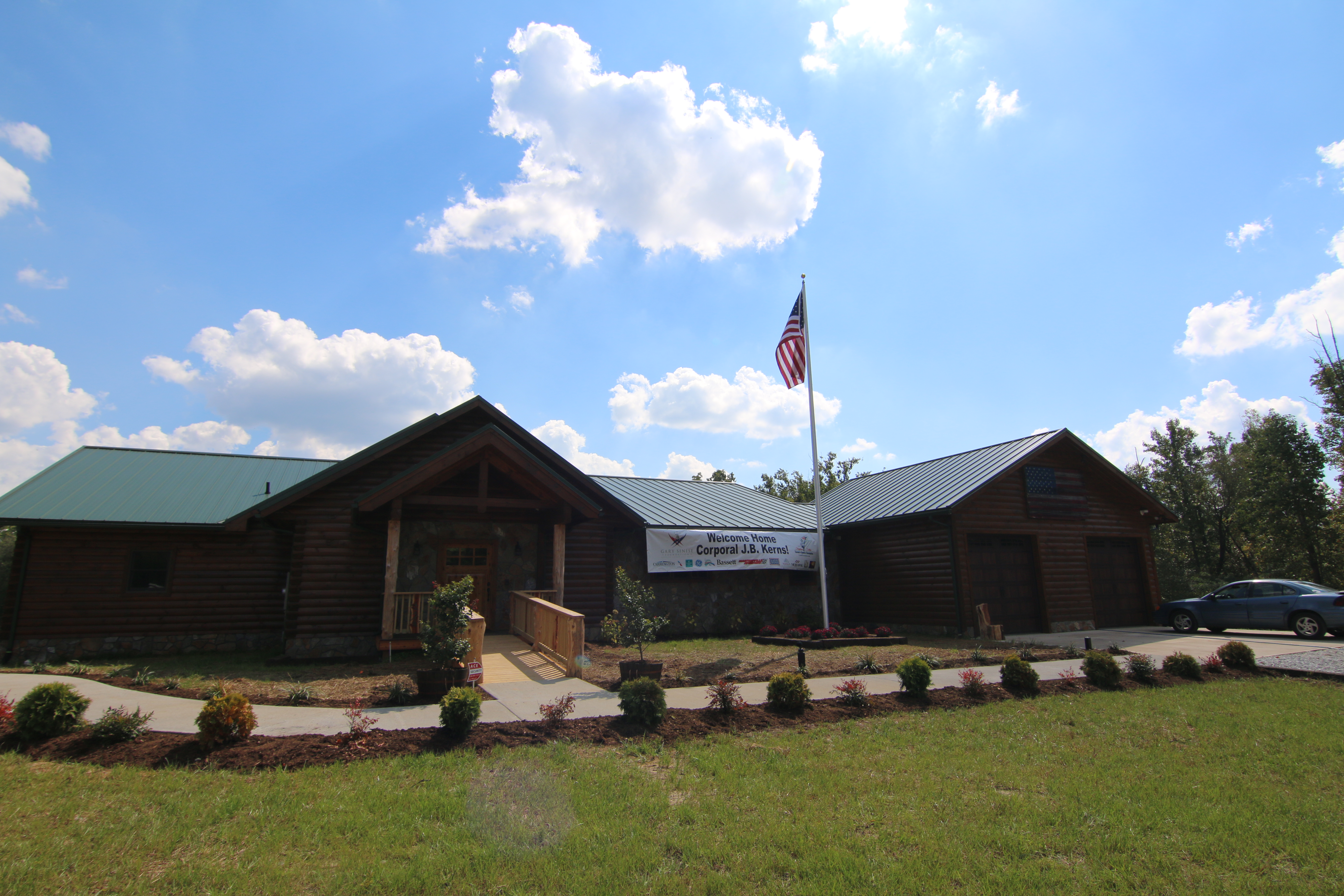Suggestions for Building a Log Home in the Winter – Part 4
While our log homes look exceptionally beautiful covered in a blanket of snow, it’s a common misconception that you cannot actually build a log home in the winter. Au contraire – it absolutely can be done! In fact, with the help of Stan Dixon and Greg Massmann (our authorized reps in IA and MN respectively) we are about to wrap up a very successful winter build. If you are considering building in the winter next year, here are some final considerations:
- Use a hot box. Hot boxes are used to keep the adhesives, caulk, and butylog warm and pliable. To make your own DIY hot box, drill a hole in one side of an old cooler, then insert a light socket. The heat from the light will warm the cooler and keep your adhesives and butyl, etc. supple and easy to work with. It’ll keep your lunch warm, too. While it’s not impossible to work in the winter without a hot box, it will definitely be more difficult to work with these products. They’ll be stiff, difficult to apply and will take longer to set.
- There are advantages to a dry atmosphere. As we mentioned in part 3, the dry atmosphere will help keep your logs nice and clean as opposed to a super wet atmosphere which yields discoloration. Of course the discoloration can easily be cleaned, it is a step that is usually unnecessary during winter builds.
- Alternative heat source. Notice how nice and clean this job site is? First of all, there are no scraps of lumber due to all of the precutting that occurs before the logs egress from the Middleburg facility. Plus, any miscellaneous scrap material is collected and thrown into a burning barrel. The fire provides a quick and temporary warm-up when you’re working in sub-zero temperatures.
- Keep packs of materials covered at all times. Important in any season, but especially during the winter, be sure to replace the tarps on your packs of material when you aren’t pulling components from them. By replacing tarps, your material will always be protected from the elements.
- Get out of the wind. Once the roof is on and windows and doors have been installed (or at least temporarily sealed with plastic or other material), it’ll make a big difference to get out of the wind. You could also hook up portable heaters to keep the working environment warm and comfortable. An extreme step would be to build a temporary heated enclosure. (Believe it or not, this has been done before.)
6. Somethings will just have to wait. In order for shingles to seat properly, they will have to go through a natural heating cycle. If it’s too cold, sometimes builders will wait until warmer weather to complete the shingle installation. In addition, exterior finishes should not be applied in extreme cold temperatures. This too will have to wait until warmer weather arrives. Lastly, the final power source might have to be put on hold, especially if utilities are underground.
All good things take time, though. You’ve waited a lifetime to realize your log home dream, may as well not rush it now… spring AND your completed dream home are right around the corner.















